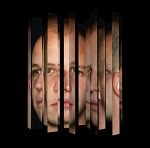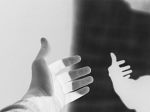|
George Eastman Hall

upcoming
exhibition
The Exhibition EXTENDED
to
A NOSE FOR PIXELS
Exhibition of the workshop of Studio of Young Photographers, Hungary
Open to the public:
November 8 – December 9 2012
on Weekdays: 14.00 - 19.00
at Weekends 11.00 - 19.00





A Nose for Pixels
In 2012 the Young Photographers’ Studio attempts to reinterpret the exhibition as a form of presentation. Rather than trying to establish a correlation between the works and the curatorial concept, it builds a group via workshop activity, generates ideas, and recounts the creative process. One of the workshops deals with the history of the 1980s, while A Nose for Pixels explores the medium of photography.
subject
Photography as a technical medium can usually be approached from two directions: from the tools used to make the picture, and the meaning of the image, the way of reading it. The two have always been closely related. Yet, what with the broadening horizon of technical media and photo applications, approaching a work from the angle of meaning results in a multiplicity of choices as for the means of making the image. At the workshop we try to determine whether the artist uses the most adequate means out of the many available, and we attempt to establish a set of objective arguments that is founded on the possibilities of the technical means.
During the workshop analysis of the medium we apply two criteria to every photo or photo-based work. One concerns the problems of photography the work poses, the other its semantic field. The ideas that emerge at the workshop and the works that are exhibited have at least this thing in common: they treat the photo as a medium, and look into what this medium is suitable for.
title
For me, the term denotes first and foremost the interlacing of cognitive and sensory qualities, the indivisible relationship of theoretical, mental and content-related aspects on the one hand, and practical, objectified, sensory traits on the other. The pixel exists virtually, while smell initiates sensory processes. As a consequence, the photo is probably the medium best suited for the analysis of this kind of interlacing. Further, the title can be read from a point of view provided by the relationship between the analogue and the digital image. The exhibiting artists attempt to reveal the complex fields of interpretation and the various forms of interplay.
workshop
A photographer will always be tempted to take their technical possibilities for granted, and adapt the content to these. The workshop reverses this process, and approaches the technical possibilities from the theoretical, moral problems. The central problem of the workshop was how the photographer can define, accept, and gain acknowledgement for, their own identity.
The methodology involved initial discussions. At these meetings I proposed to talk about the problems that photography as a medium poses, and to identify phenomena of contemporary photography. Each participant solved the problems raised with the photographic procedure they saw fit to use. The subjects addressed were trans-sensoriality, self-reflexivity, virtuality and truth content.
By trans-sensoriality I mean the limits of perception, a passage between the different senses; imperceptible photographic quantities and qualities. Self-reflexivity denotes the position thanks to which we are simultaneously inside and outside the medium. Under the heading of virtuality, we addressed the problem of material(ity). The truth content block concerned, among other things, the ways in which a documentary picture turns into a staged photo, the relationship between photography and memory, as well as between photography and evidence, and the uses of photography.
consultations
Intensive consultation took place during the summer, in a closed Facebook group established for the purpose, by email, and at personal meetings.
exhibition
As the leader of the workshop and the curator of the exhibit, I envisioned a display of photography that does not become the hostage of the visible thematic content of the pictures, of what is represented. I refused to use the traditional categories of the history of photography, even if they could be filled with contemporary, current, artistic thought. Nor did I want to make a thematic exhibit, since the history of photography is enmeshed in the thematic contents represented in the pictures; the experimental form is meant expressly to avoid this pitfall. It is an open exhibition: what is presented are the questions and answers of the artists. We hope that visitors and photographers will be encouraged to think and adapt a new attitude of reception vis-à-vis photography.
Ágnes Eperjesi,
curator of the exhibition
May – November 2012
|
Hungarian House of Photography in Mai Manó House
H-1065 Budapest-Terézváros, Nagymezõ utca 20.
Telephone: 473-2666
Fax: 473-2662
E-mail: maimano@maimano.hu
|
|
|


